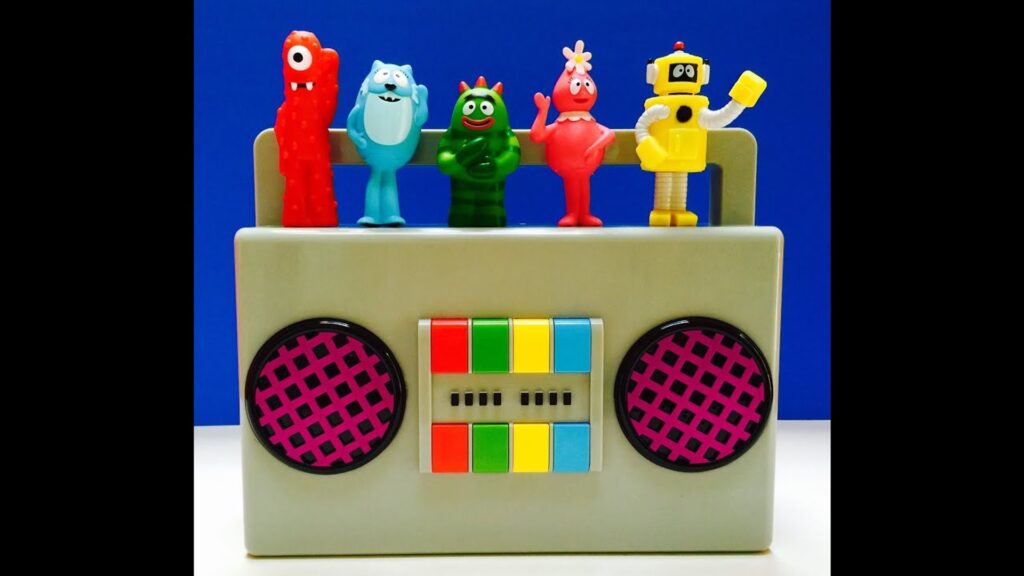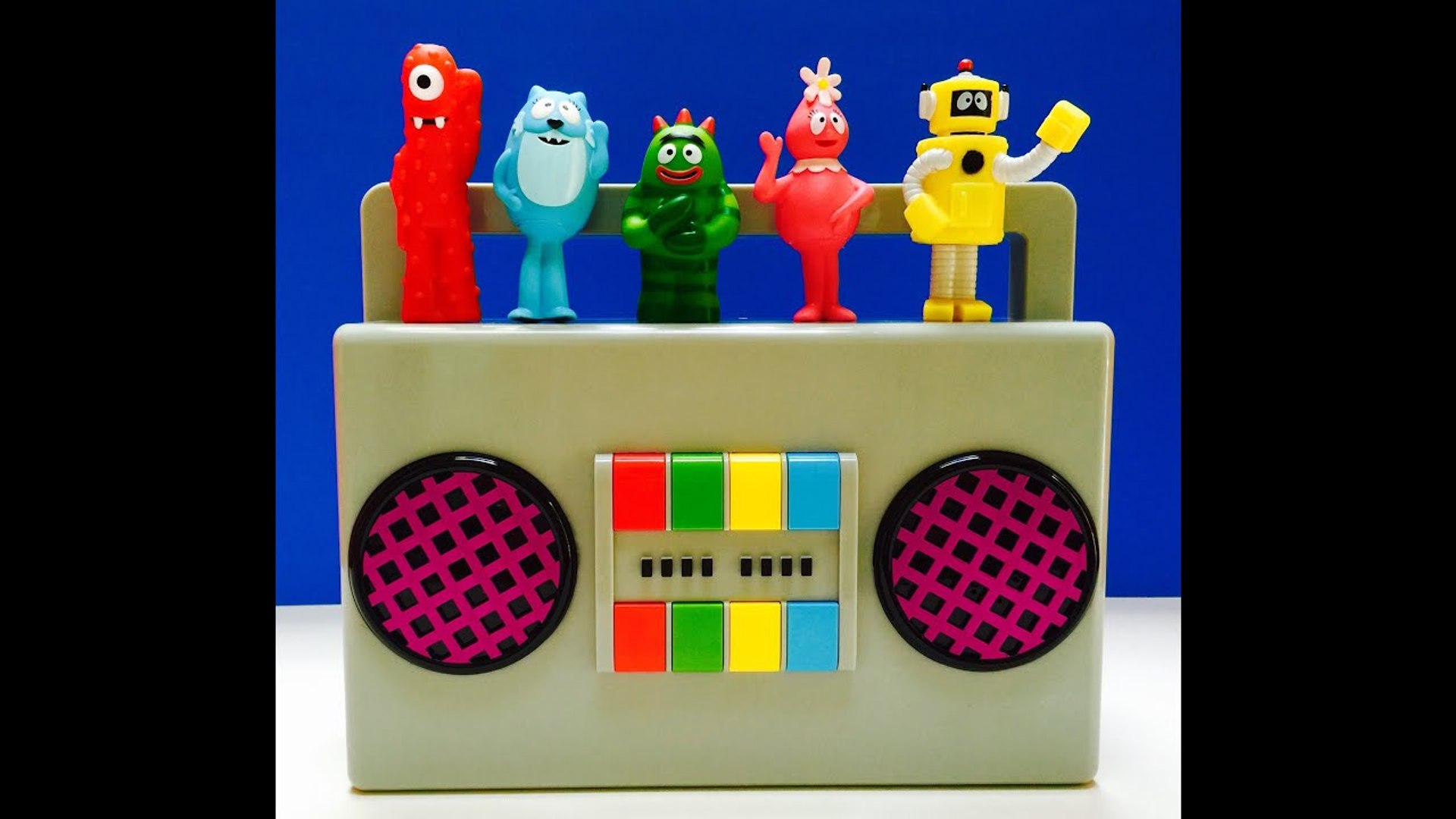
Yo Gabba Gabba! and the Enduring Appeal of Keedee Entertainment
In the landscape of children’s television, certain shows transcend mere entertainment, becoming cultural touchstones that resonate with both kids and their parents. Yo Gabba Gabba!, with its vibrant characters and infectious music, stands as a prime example. But what makes this show, and the broader category of “keedee” entertainment, so captivating and enduring? This article delves into the world of Yo Gabba Gabba!, exploring its unique appeal, educational value, and its place within the larger context of children’s programming. The term “keedee” is used here to broadly encompass entertainment tailored for young children, focusing on shows that aim to be both entertaining and educational, such as Yo Gabba Gabba!.
The Magic of Yo Gabba Gabba!
Yo Gabba Gabba!, created by Christian Jacobs and Scott Schultz, premiered in 2007 and quickly gained a loyal following. The show centers around DJ Lance Rock, who brings to life five friendly monsters: Foofa, Muno, Brobee, Toodee, and Plex. Each episode is a vibrant mix of music, dance, animation, and simple life lessons.
One of the key elements that sets Yo Gabba Gabba! apart is its unique visual style. The show’s design draws inspiration from various sources, including Japanese pop culture, 1980s video games, and classic children’s television. This eclectic mix creates a visually stimulating and engaging experience for young viewers.
Another crucial component of Yo Gabba Gabba!’s success is its music. The show features original songs that are catchy, upbeat, and educational. Many of these songs teach children about important concepts such as healthy eating, exercise, and friendship. Furthermore, Yo Gabba Gabba! often features guest appearances from popular musicians, adding to its appeal for parents as well as children. These musical segments are designed to be both fun and educational, making learning an enjoyable experience. The focus on positive messages and inclusive themes makes Yo Gabba Gabba! a standout program in the realm of keedee entertainment.
Educational Value of Yo Gabba Gabba!
Beyond its entertainment value, Yo Gabba Gabba! also offers significant educational benefits for young children. The show promotes social and emotional development by teaching children about empathy, cooperation, and conflict resolution. Each episode often addresses common childhood challenges, such as sharing toys or dealing with feelings of anger or sadness. By modeling positive behaviors and attitudes, Yo Gabba Gabba! helps children develop crucial social skills.
Furthermore, Yo Gabba Gabba! encourages creativity and imagination. The show’s vibrant visuals and playful characters inspire children to explore their own creativity through art, music, and dance. The show often features segments where children are encouraged to draw, sing, or dance along with the characters, fostering a sense of active participation and engagement. This interactive approach to learning helps children develop their creative skills and express themselves in meaningful ways.
The show’s creators also consulted with child development experts to ensure that the content was age-appropriate and aligned with key developmental milestones. This commitment to educational rigor is evident in the show’s carefully crafted storylines and engaging activities, solidifying its place as a valuable resource for parents and educators. Yo Gabba Gabba! understands the importance of engaging keedee audiences through bright colors and relatable stories.
The Broader Landscape of Keedee Entertainment
Yo Gabba Gabba! is just one example of the many forms of keedee entertainment available to children today. From educational television shows to interactive apps and games, there is a vast array of options to choose from. However, not all keedee entertainment is created equal. It is important for parents and educators to carefully evaluate the content and messages conveyed by these programs to ensure that they are aligned with their values and goals. Shows like Yo Gabba Gabba! often promote positive messages.
One of the key considerations when selecting keedee entertainment is its educational value. Look for programs that teach children important concepts such as literacy, numeracy, and science in an engaging and accessible way. Shows that incorporate interactive elements, such as games or quizzes, can be particularly effective at reinforcing learning and promoting active participation. It’s also important to consider the social and emotional impact of keedee entertainment. Choose programs that promote positive values such as kindness, empathy, and respect for others. Avoid shows that glorify violence, aggression, or other negative behaviors.
Another important factor to consider is the age-appropriateness of the content. Make sure that the programs you choose are designed for children of a specific age group and that they are free from any content that may be confusing, frightening, or otherwise harmful. It’s also important to monitor your child’s screen time and to encourage them to engage in a variety of activities, including outdoor play, reading, and social interaction. A balanced approach to keedee entertainment can help children develop their skills and knowledge while also promoting their overall well-being. Yo Gabba Gabba! often strikes this balance well.
The Influence of Keedee Entertainment on Child Development
Keedee entertainment plays a significant role in shaping children’s cognitive, social, and emotional development. The programs that children watch can influence their attitudes, beliefs, and behaviors, both positively and negatively. Therefore, it is crucial for parents and educators to be mindful of the content that children are exposed to and to actively engage with them in discussions about the messages conveyed by these programs. Programs like Yo Gabba Gabba! offer a positive influence.
Research has shown that exposure to high-quality keedee entertainment can have a positive impact on children’s cognitive development. Educational programs can help children develop their language skills, problem-solving abilities, and critical thinking skills. They can also introduce children to new concepts and ideas, expanding their knowledge and understanding of the world around them. However, it is important to note that excessive screen time can also have negative consequences, such as reduced attention spans, sleep disturbances, and social isolation. Finding a balance is key to maximizing the benefits of keedee entertainment while minimizing its potential risks. The key is finding shows like Yo Gabba Gabba! that promote healthy habits.
In addition to its cognitive benefits, keedee entertainment can also promote social and emotional development. Programs that feature diverse characters and storylines can help children develop empathy, compassion, and respect for others. They can also teach children about important social skills such as cooperation, communication, and conflict resolution. However, it is important to be aware of the potential for stereotypes and biases in keedee entertainment and to actively challenge these representations with children. By engaging in critical discussions about the messages conveyed by these programs, parents and educators can help children develop a more nuanced understanding of the world and their place in it. Many believe that Yo Gabba Gabba! does a good job with diversity and inclusion.
The Future of Keedee Entertainment
The landscape of keedee entertainment is constantly evolving, driven by technological advancements and changing consumer preferences. With the rise of streaming services and digital media, children now have access to a wider range of content than ever before. This presents both opportunities and challenges for parents and educators. On the one hand, it allows children to explore a diverse range of perspectives and experiences. On the other hand, it also increases the risk of exposure to inappropriate or harmful content. Parents must remain vigilant in monitoring their children’s media consumption and in guiding them towards high-quality, age-appropriate programs. Yo Gabba Gabba! set a high standard for quality.
Looking ahead, we can expect to see even more innovation in keedee entertainment. Virtual reality, augmented reality, and artificial intelligence are all poised to transform the way children interact with media. These technologies have the potential to create immersive, interactive learning experiences that are tailored to each child’s individual needs and interests. However, it is important to ensure that these technologies are used responsibly and ethically and that they do not exacerbate existing inequalities or create new forms of digital divide. The future of keedee entertainment will depend on our ability to harness the power of technology while also prioritizing the well-being and development of children. A classic show like Yo Gabba Gabba! provides a solid foundation of what kids need.
In conclusion, Yo Gabba Gabba! serves as a shining example of the potential of keedee entertainment to educate, entertain, and inspire young children. By combining vibrant visuals, catchy music, and positive messages, the show has captured the hearts and minds of children and parents alike. As we navigate the ever-changing landscape of children’s media, it is important to remember the lessons learned from shows like Yo Gabba Gabba! and to strive to create content that promotes the healthy development and well-being of all children. The show, and keedee entertainment in general, holds a vital place in childhood development.
Ultimately, the goal of keedee entertainment should be to nurture children’s curiosity, creativity, and compassion, empowering them to become responsible, engaged, and fulfilled members of society. By carefully selecting and engaging with keedee entertainment, parents and educators can play a crucial role in shaping the next generation of leaders and innovators. Shows such as Yo Gabba Gabba! provide a great starting point.
[See also: Educational TV Shows for Toddlers]
[See also: The Impact of Music on Child Development]
[See also: Best Apps for Preschoolers]

